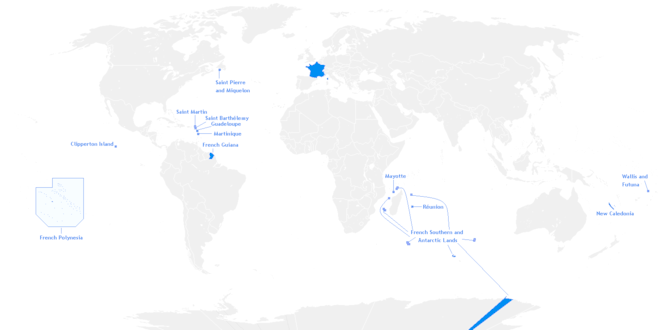History of Quebec
Quebec has played a special role in French history; the modern province occupies much of the land where French settlers founded the colony of Canada (New France) in the 17th and 18th centuries. The population is predominantly French-speaking and Roman Catholic, with a large Anglophone minority, augmented in recent years by immigrants from Asia. The political alienation of the Francophones from the Anglophones has been a persistent theme since the late 19th century. Tensions were especially high during the First World War. Historically, British merchants and financiers controlled the economy and dominated Montreal. The Catholic Church, in close cooperation with the landowners, led a highly traditional social structure in rural and small town Quebec. Much of that changed during the Quiet Revolution of the 1960s. Quebec's separatists, calling for an independent nation, gained strength but were narrowly defeated in two referenda. Quebec imposed increasingly stringent laws favouring the French language; many Anglophones left, as did many of the national and international corporations that had been based in Montreal. From 1966, Montreal's population fell until the 1980s, according to census data[1]. Montreal had been twice the size of Toronto for almost all of the 20th Century. But by 2001, it was finally, no longer the largest city in Canada.
Part of a series on the |
|---|
| History of Quebec |
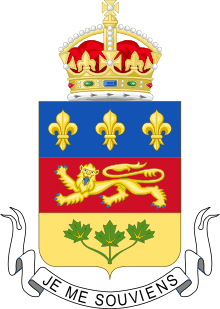 |
| Timeline |
| Territory of Quebec |
|
| Topics |
|
|


Pre-Columbian (prehistory–1533)
Aboriginal settlements were located across the area of present-day Quebec before the arrival of Europeans. In the northernmost areas of the province, Inuit communities can be found. Other aboriginal communities belong to the following First Nations:
The aboriginal cultures of present-day Quebec are diverse, with their own languages, way of life, economies, and religious beliefs. Before contact with Europeans, they did not have a written language, and passed their history and other cultural knowledge along to each generation through oral tradition.[2]
Today around three-quarters of Quebec's aboriginal populations lives in small communities scattered throughout the rural areas of the province, with some living on reserves.
Jacques Cartier sailed into the St. Lawrence River in 1534 and established an ill-fated colony near present-day Quebec City at the site of Stadacona, a village of the St. Lawrence Iroquoians. Linguists and archaeologists have determined these people were distinct from the Iroquoian nations encountered by later French and Europeans, such as the five nations of the Haudenosaunee. Their language was Laurentian, one of the Iroquoian family. By the late 16th century, they had disappeared from the St. Lawrence Valley.
Paleo-Indian Era (11,000–8000 BC)
Existing archaeological evidence attests to a human presence on the current territory of Quebec sometime around 10,000 BC. Paleo-American populations preceded the arrival of the Algonquian and Iroquois people in southern Quebec about 10,000 years ago.[3]
Archaic era (8000–1500 BC)
The Paleoindian period was followed by the Archaic, a time when major changes occurred in the landscape and the settlement of the territory of Quebec. With the end of glaciation, the inhabitable territory increased in size and the environment (such as climate, vegetation, lakes and rivers) became increasingly stable. Migrations became rarer and moving around became a seasonal activity necessary for hunting, fishing or gathering.[4]
The nomadic populations of the Archaic period were better established and were very familiar with the resources of their territories. They adapted to their surroundings and experienced a degree of population growth. Their diet and tools diversified. Aboriginal peoples used a greater variety of local material, developed new techniques, such as polishing stone, and devised increasingly specialized tools, such as knives, awls, fish hooks, and nets.[5]
Woodland era (3000 BC–1500 AD)
Agriculture appeared experimentally toward the 8th century. It was only in the 14th century that it was fully mastered in the Saint Lawrence River valley. The Iroquoians cultivated corn, marrow, sunflowers, and beans.[6]
Early French exploration (1508–1607)
In 1508, only 16 years after the first voyage of Christopher Columbus, Thomas Auber, who was likely part of a fishing trip near Newfoundland, brought back a few Amerindians to France. This indicates that in the early 16th century, French navigators ventured in the gulf of the St. Lawrence, along with the Basques and the Spaniards who did the same.[7]
Also, Jacques Cartier wrote in his journal that when he made his first contacts with the Amerindians (St. Lawrence Iroquoians), that they came to him in their boats to offer him furs. All these facts and several other details encourage us to believe that this was not the first meeting of Amerindians and Europeans.
Jacques Cartier's voyages

On June 24, 1534, French explorer Jacques Cartier planted a cross on the Gaspé Peninsula and took possession of the territory in the name of King François I of France.[8]
On his second voyage on May 26, 1535, Cartier sailed upriver to the St. Lawrence Iroquoian villages of Stadacona, near present-day Quebec City, and Hochelaga, near present-day Montreal.
In 1541, Jean-François Roberval became lieutenant of New France and had the responsibility to build a new colony in America. It was Cartier who established the first French settlement on American soil, Charlesbourg Royal.
France was disappointed after the three voyages of Cartier and did not want to invest further large sums in an adventure with such uncertain outcome. A period of disinterest in the new world on behalf of the French authorities followed. Only at the very end of the 16th century interest in these northern territories was renewed.[8]
Still, even during the time when France did not send official explorers, Breton and Basque fishermen came to the new territories to stock up on codfish and whale oil. Since they were forced to stay for a longer period of time, they started to trade their metal objects for fur provided by the indigenous people. This commerce became profitable and thus the interest in the territory was revived.
Fur commerce made a permanent residence in the country worthwhile. Good relations with the aboriginal providers were necessary. For some fishermen however, a seasonal presence was sufficient. Commercial companies were founded that tried to further the interest of the Crown in colonizing the territory. They demanded that France grant a monopoly to one single company. In return, this company would also take over the colonization of the French American territory. Thus, it would not cost the king much money to build the colony. On the other hand, other merchants wanted commerce to stay unregulated. This controversy was a big issue at the turn of the 17th century.
By the end of the 17th century, a census showed that around 10,000 French settlers were farming along the lower St. Lawrence Valley.[9] By 1700, fewer than 20,000 people of French origin were settled in New France, extending from Newfoundland to the Mississippi, with the pattern of settlement following the networks of the cod fishery and fur trade, although most Quebec settlers were farmers.[10]
New France (1534–1759)
Modern Quebec was part of the territory of New France, the general name for the North American possessions of France until 1763. At its largest extent, before the Treaty of Utrecht, this territory included several colonies, each with its own administration: Canada, Acadia, Hudson Bay, and Louisiana.
The borders of these colonies were not precisely defined, and were open on the western side, as the maps below show:
 1592–1594: A map of New France made by cartographers Jan Doetecom, Petrus Plancius, and Cornelis Claesz.
1592–1594: A map of New France made by cartographers Jan Doetecom, Petrus Plancius, and Cornelis Claesz.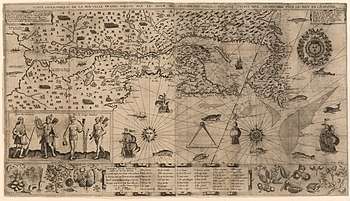 1612: A map of New France made by Samuel de Champlain.
1612: A map of New France made by Samuel de Champlain. 1730: New France, also referred to as Canada on the map.
1730: New France, also referred to as Canada on the map.
French Canada (1608–1759)
Three quarters of a century after being explored by Jacques Cartier and unsuccessfully colonized by Roberval, Samuel de Champlain laid out the foundation of French Canada.
Early years (1608–1663)
Quebec City was founded in 1608 by Samuel de Champlain. Some other towns were founded before, most famously Tadoussac in 1604 which still exists today, but Quebec was the first to be meant as a permanent settlement and not a simple trading post. Over time, it became the capital of Canada and all of New France.

The first version of the town was a single large walled building, called the Habitation. A similar Habitation was established in Port Royal in 1605, in Acadia. This arrangement was made for protection against perceived threats from the indigenous people. The difficulty of supplying the city of Quebec from France and the lack of knowledge of the area meant that life was hard. A significant fraction of the population died of hunger and diseases during the first winter. However, agriculture soon expanded and a continuous flow of immigrants, mostly men in search of adventure, increased the population.
The French quickly established trading posts throughout their territory, trading for fur with aboriginal hunters. The coureur des bois, who were freelance traders, explored much of the area themselves. They kept trade and communications flowing through a vast network along the rivers of the hinterland. This network was inherited by the English and Scottish traders after the fall of the French Empire in Quebec, and many of the coureur des bois became voyageurs for the British.[11]
The Catholic Church was given en seigneurie large and valuable tracts of land estimated at nearly 30% of all the lands granted by the French Crown in New France.[12] In 1633, Cardinal Richelieu granted a charter to the Company of One Hundred Associates, which had been created by the Cardinal himself in 1627. This gave the company control over the booming fur trade and land rights across the territory in exchange for the company supporting and expanding settlement in New France (at the time encompassing Acadia, Quebec, Newfoundland, and Louisiana).[13] Specific clauses in the charter included a requirement to bring 4000 settlers into New France over the next 15 years. The company largely ignored the settlement requirements of their charter and focused on the lucrative fur trade, only 300 settlers arriving before 1640.
The early years of the company's rule were disastrous for Quebec. Because of war with England, the first two convoys of ships and settlers bound for the colony were waylaid near Gaspé by British privateers under the command of three French-Scottish Huguenot brothers, David, Louis and Thomas Kirke. Quebec was effectively cut off. On 19 July 1629, with Quebec completely out of supplies and no hope of relief, Champlain surrendered Quebec to the Kirkes without a fight. Champlain and other colonists were taken to England, where they learned that peace had been agreed (in the 1629 Treaty of Suza) before Quebec's surrender, and the Kirkes were obliged to return their takings. However, they refused, and it was not until the 1632 Treaty of Saint-Germain-en-Laye that Quebec and all other captured French possessions in North America were returned to New France. Champlain was restored as de facto governor but died three years later.
On the verge of bankruptcy, the company lost its fur trade monopoly in 1641 and was finally dissolved in 1662.[14]
Sovereign Council (1663–1760)

The establishment of the Conseil souverain, political restructuring which turned New France into a province of France, ended the period of company rule and marked a new beginning in the colonization effort.
Catholic nuns
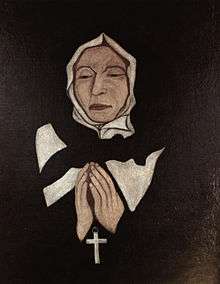
Outside the home, Canadian women had few domains which they controlled. An important exception came with Roman Catholic nuns. Stimulated by the influence in France of the popular religiosity of the Counter-Reformation, new orders for women began appearing in the seventeenth century and became a permanent feature of Quebec society.[15]
The Ursuline Sisters arrived in Quebec City in 1639, and in Montreal in 1641. They spread as well to small towns. They had to overcome harsh conditions, uncertain funding, and unsympathetic authorities as they engaged in educational and nursing functions. They attracted endowments and became important landowners in Quebec. Marie de l'Incarnation (1599–1672) was the mother superior at Quebec, 1639–72.[16][17]
During the 1759 Quebec Campaign of the Seven Years' War, Augustinian nun Marie-Joseph Legardeur de Repentigny, Sœur de la Visitation, managed the Hôpital Général in Quebec City and oversaw the care of hundreds of wounded soldiers from both the French and British forces. She wrote in after-action report on her work, noting, "The surrender of Quebec only increased our work. The British generals came to our hospital to assure us of their protection and at the same time made us responsible for their sick and wounded." The British officers stationed at the hospital reported on the cleanliness and high quality of the care provided. Most civilians deserted the city, leaving the Hôpital Général as a refugee centre for the poor who had nowhere to go. The nuns set up a mobile aid station that reached out to the cities refugees, distributing food and treating the sick and injured.[18]
British conquest (1756–1760)
In the middle of the 18th century, British North America had grown to be close to a full-fledged independent country, something they would actually become a few decades later, with more than 1 million inhabitants. Meanwhile, New France was still seen mostly as a cheap source of natural resources for the metropolis, and had only 60,000 inhabitants. Nevertheless, New France was territorially larger than the Thirteen Colonies, but had a population less than 1/10 the size. There was warfare along the borders, with the French supporting Indian raids into the American colonies.[19]
The earliest battles of the French and Indian War occurred in 1754 and soon widened into the worldwide Seven Years' War. The territory of New France at that time included parts of present-day Upstate New York, and a series of battles were fought there. The French military enjoyed early successes in these frontier battles, gaining control over several strategic points in 1756 and 1757.
The British sent substantial military forces, while the Royal Navy controlled the Atlantic, preventing France from sending much help. In 1758 the British captured Louisbourg, gaining control over the mouth of the St. Lawrence, and also took control of key forts on the frontier in battles at Frontenac and Duquesne. In spite of the spectacular defeat of the supposed main British thrust in the Battle of Carillon (in which a banner was supposedly carried that inspired the modern flag of Quebec), the French military position was poor.
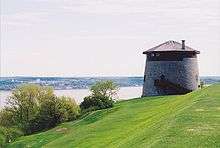
In the next phase of the war, begun in 1759, the British aimed directly at the heart of New France. General James Wolfe led a fleet of 49 ships holding 8,640 British troops to the fortress of Quebec. They disembarked on Île d'Orléans and on the south shore of the river; the French forces under Louis-Joseph de Montcalm, Marquis de Saint-Veran, held the walled city and the north shore. Wolfe laid siege to the city for more than two months, exchanging cannon fire over the river, but neither side could break the siege. As neither side could expect resupply during the winter, Wolfe moved to force a battle. On 5 September 1759, after successfully convincing Montcalm he would attack by the Bay of Beauport east of the city, the British troops crossed close to Cap-Rouge, west of the city, and successfully climbed the steep Cape Diamond undetected.[20] Montcalm, for disputed reasons, did not use the protection of the city walls and fought on open terrain, in what would be known as the Battle of the Plains of Abraham. The battle was short and bloody; both leaders died in battle, but the British easily won. (The Death of General Wolfe is a well-known 1770 painting by artist Benjamin West depicting the final moments of Wolfe.)
Now in possession of the main city and capital, and further isolating the inner cities of Trois-Rivières and Montreal from France, the rest of the campaign was only a matter of slowly taking control of the land. While the French had a tactical victory in the Battle of Sainte-Foy outside Quebec in 1760, an attempt to lay siege to the city ended in defeat the following month when British ships arrived and forced the French besiegers to retreat. An attempt to resupply the French military were further dashed in the naval Battle of Restigouche, and Pierre de Rigaud, Marquis de Vaudreuil-Cavagnial, New France's last Royal governor, surrendered Montreal on 8 September 1760.
Britain's success in the war forced France to cede all of Canada to the British at the Treaty of Paris. The Royal Proclamation of October 7, 1763 by King George III of Great Britain set out the terms of government for the newly captured territory, as well as defining the geographic boundaries of the territory.[21]
British rule (1760–1867)
Royal Proclamation (1763–1774)
British rule under Royal Governor James Murray was benign, with the French Canadians guaranteed their traditional rights and customs.[22] The British Royal Proclamation of 1763 united three Quebec districts into the Province of Quebec. It was the British who were the first to use the name "Quebec" to refer to a territory beyond Quebec City.[23] The British tolerated the Catholic Church, and protected the traditional social and economic structure of Quebec. The people responded with one of the highest birth rates ever recorded, 65 births per thousand per year[24] Much French law was retained inside a system of British courts, all under the command of the British governor.[25][26] The goal was to satisfy the Francophile settlers, albeit to the annoyance of British merchants.[27]
Quebec Act (1774)
The Quebec Act of 1774 was an Act of the Parliament of Great Britain setting procedures of governance in the Province of Quebec. Among other components, this act restored the use of the French civil law for private matters while maintaining the use of the English common law for public administration (including criminal prosecution), replaced the oath of allegiance so that it no longer made reference to the Protestant faith, and guaranteed free practice of the Catholic faith. The purpose of this Act was to secure the allegiance of the French Canadians with unrest growing in the American colonies to the south.[28]
American Revolutionary War
When the American Revolutionary War broke out in early 1775, Quebec became a target for American forces, that sought to liberate the French population there from British rule. In September 1775 the Continental Army began a two-pronged invasion, with one army capturing Montreal while another traveled through the wilderness of what is now Maine toward Quebec City. The two armies joined forces, but were defeated in the Battle of Quebec, in which the American General Richard Montgomery was slain. The Americans were driven back into New York by the arrival of a large army of British troops and German auxiliaries ("Hessians") in June 1776.
Before and during the American occupation of the province, there was a significant propaganda war in which both the Americans and the British sought to gain the population's support. The Americans succeeded in raising two regiments in Quebec, led by James Livingston and Moses Hazen, one of which served throughout the war. Hazen's 2nd Canadian Regiment served in the Philadelphia campaign and also at the Siege of Yorktown, and included Edward Antill, a New Yorker living in Quebec City (who actually led the regiment at Yorktown as Hazen had been promoted to brigadier general), Clément Gosselin, Germain Dionne, and many others. Louis-Philippe de Vaudreuil, a Quebecker, was with the French Navy in the Battle of the Chesapeake that prevented the British Navy from reaching Yorktown, Virginia.
After General John Burgoyne's failed 1777 campaign for control of the Hudson River, Quebec was used as a base for raiding operations into the northern parts of the United States until the end of the war. When the war ended, large numbers of Loyalists fled the United States. Many were resettled into parts of the province that bordered on Lake Ontario. These settlers eventually sought to separate themselves administratively from the French-speaking Quebec population, which occurred in 1791.[28]
Historiography
Nationalist French Canadian historians have mostly emphasized the success of the little colony, and blamed its shortcomings after 1760 on British conquerors. A contrary view was presented by Fernand Ouellet (b. 1926), who tried to undermine the foundations of Quebec nationalism. He drew attention to the negative role played by women in Quebec society. He has accused fellow historians of trying to "normalize" Quebec's past, so as to provide a stronger justification of sovereignty[29] In response, French-speaking historians have been hostile to his suggestion that French-Canadians are the agents of their own difficulties. These historians, instead of dwelling on economic shortcomings, have stressed the deep roots of modernity, a position that Ouellet strongly rejected. In a nutshell, Ouellet insisted that Quebec's history offers "more support for the thesis of backwardness and for that of modernization".[30]
For the French Canadians, the chief debate among historians involves the conquest and the incorporation into the British Empire in 1763.[31] One school says it was a disaster that stifled progress for a century and more the normal development of a middle class society, leaving Quebec locked into a traditionalism controlled by priests and landlords.[32] The other more optimistic school says it was generally advantageous in political and economic terms. For example, it enabled Quebec to avoid the French Revolution that tore France apart in the 1790s. Another example is that it integrated the economy into the larger and faster growing British economy, as opposed to the sluggish French economy. The optimistic school attributes the backwardness of the Quebec economy to deeply ingrained conservatism and aversion to entrepreneurship.[33][34]
Constitutional Act (1791–1840)
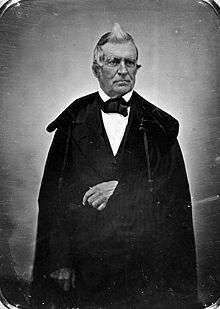
The Constitutional Act of 1791 divided Quebec into Upper Canada (the part of present-day Ontario south of Lake Nipissing plus the current Ontario shoreline of Georgian Bay and Lake Superior) and Lower Canada (the southern part of present-day Quebec).[28] Newly arrived English-speaking Loyalist refugees had refused to adopt the Quebec seigneurial system of land tenure, or the French civil law system, giving the British reason to separate the English-speaking settlements from the French-speaking territory as administrative jurisdictions.[35] Upper Canada's first capital was Newark (present-day Niagara-on-the-Lake); in 1796, it was moved to York (now Toronto).
The new constitution, primarily passed to answer the demands of the Loyalists, created a unique situation in Lower Canada. The Legislative Assembly, the only elected body in the colonial government, was continually at odds with the Legislative and Executive branches appointed by the governor. When, in the early 19th century, the Parti canadien rose as a nationalist, liberal and reformist party, a long political struggle started between the majority of the elected representatives of Lower Canada and the colonial government. The majority of the elected representatives in the assembly were members of the francophone professional class: "lawyers, notaries, doctors, innkeepers or small merchants", who comprised 77.4% of the assembly from 1792 to 1836.[36]
In 1831, more than 50,000 people immigrated to Quebec. The next year brought 52,000 individuals and with them the Asiatic cholera, and within five months 4,200 deaths resulted.[37]
The struggle over language finally led to armed rebellions in 1837 and 1838 led by reformers from the Parti canadien, also referred to as the "Parti patriote". Key goals for the rebels were to have responsible government and, for many, to terminate prejudicial dominance of the English minority over the French majority. Louis-Joseph Papineau was instrumental in acting as a leadership figure for the rebels, yet his ideological views were ambiguous concerning the relative importance of seigneurial landowners, the Roman Catholic Church, and the francophone bourgeoisie. Under his influence, the first rebellion of 1837 was directed at the seigneurs and the clergy as much as the anglophone governor.[36] The 1837 rebellion resulted in a declaration of martial law, and suspension of Canada's Constitution. To centralize authority under the Crown, John Lambton, Lord Durham was named governor of all of British North America.
Martial law and Special Council (1838–1840)
The second rebellion in 1838 was to have more far-reaching consequences. In 1838, Lord Durham arrived in Canada as High Commissioner. Although skirmishes with British troops were relatively minor during the second rebellion of 1838, the Crown dealt forcefully in punishing the rebels. 850 of them were arrested; 12 were eventually hanged, and 58 were transported to Australian penal colonies.[36]
In 1839, Lord Durham was called upon by the Crown to deliver a Report on the Affairs of British North America as a result of the rebellions. The Special Council that governed the colony from 1838 to 1841 enacted many reforms with the aim of improving economic and bureaucratic affairs, such as land ownership and the establishment of new schools. These institutional reforms ultimately became the foundation of "responsible government" in the colony.[36]
Many American colonists who remained loyal to England left the 13 Atlantic colonies before American independence for Canada, with many settling in communities in southern Quebec.[28] In the 19th century, Quebec experienced several waves of immigration, principally from England, Scotland and Ireland. At the turn of the 20th century, immigrants to Quebec came mainly from Ireland, but large numbers of immigrants arrived from Germany and other areas of western Europe.
1840–1866
Union Act
Lord Durham recommended that Upper Canada and Lower Canada be united, in order to make the francophone population of Lower Canada a minority within the united territory and weaken its influence. Durham expressed his objectives in plain terms.[38] His recommendation was followed; the new seat of government was located in Montreal, with the former Upper Canada being referred to as "Canada West" and the former Lower Canada being referred to as "Canada East". The Act of Union 1840 formed the Province of Canada. Rebellion continued sporadically, and in 1849, the burning of the Parliament Buildings in Montreal led to the relocation of the seat of government to Toronto. Historian François-Xavier Garneau, like other Canada East francophones during the 1840s, had deep concerns about the united entity and the place of the francophones within it.[39]
Emigration
French Canadians had continued to farm as they always had. By the 1850s, soil nutrients were becoming exhausted. Their farming methods were outdated.[40] About this time the textile industry in New England experienced a boom. With living conditions so harsh, and work very hard to find even in the largest city, Montreal, emigration seemed the only option for many. As the first wave moved out in the 1850s, word of mouth soon began to move larger crowds by the late 1870s. Mill owners hired these French immigrants to staff their mills more cheaply than American and Irish-born workers, who were themselves displaced.[41]
When the first wave of emigrants left Quebec, the local government did not pay much attention as the numbers were relatively small. However, when the emigration began to increase and the provincial economy was going through a depression, leaders of the province attempted to halt the emigration. The church warned of hell being destined for those who decided to leave. Nevertheless, more than 200,000 left between 1879–1901.[42]
Federal Dominion (1867)
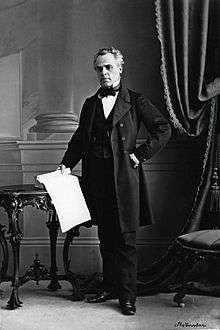
In the decades immediately before Canadian Confederation in 1867, French-speaking Quebeckers, known as Canadiens in French, remained a majority within Canada East. Estimates of their proportion of the population between 1851 and 1861 are 75% of the total population, with around 20% of the remaining population largely composed of English-speaking citizens of British or Irish descent.[43] From 1871 to 1931, the relative size of the French-speaking population stayed much the same, rising to a peak of 80.2% of Quebec's population in 1881. The proportion of citizens of British descent declined slightly in contrast, from a peak of 20.4% of the population in 1871, to 15% by 1931. Other minorities made up the remainder of the population of the province.[44]
After several years of negotiations, in 1867 the British Parliament passed the British North America Acts, by which the Province of Canada, New Brunswick, and Nova Scotia joined to form the Dominion of Canada. Canada East became the Province of Quebec. Canada remained self-governing locally, but the British continued to control its external affairs. George-Étienne Cartier, a "Father of Confederation", was the most prominent promoter of Confederation for Quebec.
Growth of Montreal
Urban expansion characterized Montreal around the time of Confederation, as rural French Canadians moved to the city to find work. Immigrants flocked to Montreal, Canada's largest city at the time, and so did many people from other parts of Canada. Major business and financial institutions were established in Montreal, including the headquarters of several national banks and corporations. Prominent businessmen included brewer and politician John Molson Jr., jeweller Henry Birks, and insurer James Bell Forsyth. Montreal's population grew rapidly, from around 9000 in 1800, to 23,000 in 1825, and 58,000 in 1852.[45] By 1911, the population was over 528,000. The City of Montreal annexed many neighbouring communities, expanding its territory fivefold between 1876 and 1918.[46]
 The funeral of Thomas D'Arcy McGee in 1868 drew a crowd of 80,000 out of a city population of 110,000.
The funeral of Thomas D'Arcy McGee in 1868 drew a crowd of 80,000 out of a city population of 110,000. Montreal Stock Exchange, 1903.
Montreal Stock Exchange, 1903. Wagon for Christie's Biscuits in Montreal, 1904.
Wagon for Christie's Biscuits in Montreal, 1904. 1908 newspaper advertisement for a movie theatre on Ste.-Catherine Street, Montreal.
1908 newspaper advertisement for a movie theatre on Ste.-Catherine Street, Montreal.
Influence of the Catholic institutions
Many aspects of life for French-speaking Quebeckers remained dominated by the Catholic Church in the decades following 1867. The Church operated many of the institutions of the province, including most French-language schools,[47] hospitals, and charitable organizations. The leader of the Catholic Church in Quebec was the Bishop of Montreal, and from 1840 to 1876 this was Ignace Bourget, an opponent of liberalism. Bourget eventually succeeded in gaining more influence than the liberal, reformist Institut Canadien. At his most extreme, Bourget went so far as to deny a Church burial to Joseph Guibord, a member of the Institut, in 1874. A court decision forced Bourget to allow Guibord to be buried in a Catholic cemetery, but Bourget deconsecrated the burial plot of ground, and Guibord was buried under army protection.[48] The conservative approach of the Catholic Church was the major force in Quebec society until the reforms of the Quiet Revolution during the 1960s.
Catholic women started dozens of independent religious orders, funded in part by dowries provided by the parents of young nuns. The orders specialized in charitable works, including hospitals, orphanages, homes for unwed mothers, and schools. In the first half of the twentieth century, about 2-3% of Quebec's young women became nuns; there were 6,600 in 1901 and 26,000 in 1941. In Quebec in 1917, 32 different teaching orders operated 586 boarding schools for girls. At that time there was no public education for girls in Quebec beyond elementary school. The first hospital was founded in 1701. In 1936, the nuns of Quebec operated 150 institutions, with 30,000 beds to care for the long-term sick, the homeless, and orphans.[49] Between 1870 and 1950, thousands of young girls were sent to Quebec City, to the reform school (1870–1921) and the industrial school (1884–1950) of the Hospice St-Charles, both operated by the Sisters of the Good Shepherd.[50]
 Convent belonging to the Grey Nuns (Soeurs Grises), Montreal, 1867.
Convent belonging to the Grey Nuns (Soeurs Grises), Montreal, 1867.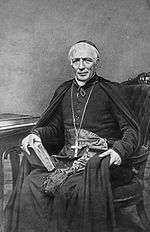 Ignace Bourget, Bishop of Montreal, in 1862.
Ignace Bourget, Bishop of Montreal, in 1862.
Politics
The 1885 execution in Saskatchewan of Métis rebel leader Louis Riel resulted in protests in Quebec, as the French Canadians thought they were being deliberately persecuted for their religion and language. Honoré Mercier became the outspoken leader of the protest movement. The federal Cabinet members of the Quebec Conservative Party had reluctantly supported Prime minister Macdonald's decision in favour of execution. Support for Conservatives eroded.
Seizing the opportunity to build a coalition of his Liberals and dissident Conservatives, Mercier revived the "Parti National" name for the 1886 Quebec provincial election, and won a majority of seats. However, the coalition consisted of mostly Liberals and only a few Conservatives, so the "Liberal" name was soon reinstituted. The Conservatives, reduced to a minority in the Legislative Assembly, clung to power for a few more months. Mercier became Premier of Quebec in 1887.[51] Seeing provincial autonomy as the political expression of Quebec nationalism, he collaborated with Ontario premier Oliver Mowat to roll back federal centralism.[52]
With his strong nationalist stance, Mercier was very much a precursor of later nationalist premiers in future decades who confronted the federal government and tried to win more power for Quebec. He promoted contacts with francophones in other parts of North America outside of Quebec including Western Canada and New England. Those francophones had not yet been assimilated into the English-Canadian or American culture to the extent they would be in the future. Mercier promoted reform, economic development, Catholicism, and the French language. He won popularity but also made enemies. He was returned to the legislature as the Member for the district of Bonaventure and his party won the 1890 election with an increased majority. He was defeated in 1892.
Prime Minister Wilfrid Laurier
.jpg)
In 1896, Wilfrid Laurier became the first French Canadian to become Prime Minister of Canada. Educated in both French and English, Laurier remained in office as Prime Minister until October 1911. Laurier had several notable political achievements in Quebec, among them winning Quebec votes for the Liberal Party, against the desires of the powerful Catholic clergy.
In 1899, Henri Bourassa was outspoken against the British government's request for Canada to send a militia to fight for Britain in the Second Boer War. Laurier's compromise was to send a volunteer force, but the seeds were sown for future conscription protests during the world wars. Bourassa challenged, unsuccessfully, the proposal to build warships to help protect the empire. He led the opposition to mandatory conscription during World War I, arguing that Canada's interests were not at stake. He opposed Catholic bishops who defended military support of Britain and its allies.[53]
Boundaries
As more provinces joined Canadian Confederation, there was a pressing need to formalize provincial boundaries. Quebec's provincial boundaries were expanded twice during this period, first in 1898, when the Parliament of Canada passed the Quebec Boundary Extension Act, 1898, and again in 1912, when the Parliament of Canada passed the Quebec Boundaries Extension Act, 1912, expanding the Province's borders to its current status.
Population migration also characterized life in late 19th century Quebec. In the late 19th century, overpopulation in the Saint Lawrence Valley led many Quebeckers to immigrate to the Saguenay–Lac-Saint-Jean region, the Laurentides, and New England, providing a link with that region that continues to this day.
In 1927, a Judicial Committee of the Privy Council decided in favour of the British Colony of Newfoundland in a dispute with Canada over the boundary of Labrador.
Depression, War and Postwar: 1929–1959
Great Depression
The worldwide Great Depression that began in 1929 hit Quebec hard, as exports, prices, profits and wages plunged and unemployment soared to 30%, and even higher in lumbering and mining districts. Politically there was a move to the right, as Quebec's leaders noted that across the globe the failures attributed to capitalism and democracy had led to the spread of socialism, totalitarianism, and Civil War. The Spanish Civil War in particular alarmed devout Catholics, who demanded that Canada keep out representatives of the anti-Catholic Loyalist government of Spain. There was a wave of clericalism and Quebec nationalism that represented a conservative reaction of a traditional society which feared social change as a threat to its survival.[54]
With so many men unemployed or on lower wages, it was a major challenge for housewives to cope with the shortages of money and resources. Often they updated strategies their mothers used when they were growing up in poor families. Cheap foods were used, such as soups, beans and noodles. They purchased the cheapest cuts of meat—sometimes even horse meat—and recycled the Sunday roast into sandwiches and soups. They sewed and patched clothing, traded with their neighbors for outgrown items, and kept the house colder. New furniture and appliances were postponed until better days. These strategies, Baillargeon finds, show that women's domestic labour—cooking, cleaning, budgeting, shopping, childcare—was essential to the economic maintenance of the family and offered room for economies. Most of her informants also worked outside the home, or took boarders, did laundry for trade or cash, and did sewing for neighbors in exchange for something they could offer. Extended families used mutual aid—extra food, spare rooms, repair-work, cash loans—to help cousins and in-laws.[55] Half the devout Catholics defied Church teachings and used contraception to postpone births—the number of births nationwide fell from 250,000 in 1930 to about 228,000 and did not recover until 1940.[56]
The populist poet Emile Coderre (1893–1970), writing as "Jean Narrache" gave voice to the poor people of Montreal as they struggled for survival during the Great Depression. Writing in the language of the street, Narrache adopted the persona of a man living in poverty who reflects on the ironies attending the meagerness of social assistance, the role of class, the pretensions of the commercial elite, and the counterfeit philanthropy of the rich.[57]
There was political alienation as more and more voters complained of the indifference and incompetence of both the national leadership of Prime Minister Bennett and the Conservative party,[58] as well as the provincial leadership of Liberal Premier Louis-Alexandre Taschereau.[59] Many of the discontented gravitated toward the ultramontane nationalists especially Henri Bourassa, editor of Le Devoir, and the highly traditional Catholic writer Lionel Groulx, editor of L'action canadienne-française. Building on this disenchantment, Maurice Duplessis led the new Union nationale party to victory in 1936 with 58% of the vote and became premier.[60]
Second World War
Prosperity returned with the Second World War, as demand soared for the province's manpower, raw materials and manufactures.[61] 140,000 young men, both Francophone and Anglophone, rushed to enlist, although English was the dominant language in all the services and essential for promotion.[62]
Duplessis expected to ride antiwar sentiment to victory when he called an election in the fall of 1939. He miscalculated as the Liberals scored a landslide, with 70 seats to only 14 for the Union nationale.[63]
Canadian leaders managed to avoid the depths of the conscription crisis that had soured relations between Anglophones and Francophones during the First World War. During the Conscription Crisis of 1944 Quebecers protested the conscription. Prime Minister William Lyon Mackenzie King tried, but did not succeed in, avoiding full conscription in Canada, and it became a reality in the final months of World War II. However, the end of the war also meant the end of the crisis. MacKenzie King succeeded in portraying himself as "a moderate", and at the same time "limited the ethnic bitterness" that had marked the 1917 conscription crisis.[64]
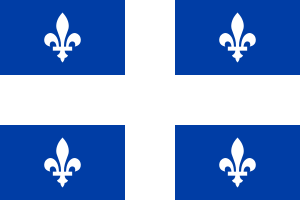
Maurice Duplessis

Duplessis returned as premier in the 1944 election, and held power without serious opposition for the next fifteen years, until his death, winning elections in 1948, 1952 and 1956. He became known simply as le Chef ("the boss"). He championed rural areas, provincial rights, and anti-Communism, and opposed the trade unions, modernizers and intellectuals. He worked well with the powerful Anglo businessmen who controlled most of the economy. A highly controversial figure even today, Duplessis and his Union Nationale party dominated the province. Duplessis' years in power have been ridiculed as the La Grande Noirceur ("Great Darkness") by his opponents.[65] The Duplessis years were ones of close church-state relations. Quebec society remained culturally insular during this period, in contrast to the modernizing influences sweeping through the rest of North America. Traditional Catholic morality and Church doctrine defined many aspects of daily life, highlighting traditionalism. For example, most schools and hospitals were Church-controlled. Births outside marriage were rare, abortion was illegal, and divorce was not fully legalized in Quebec until 1968.[66] In recent years, many people in Quebec have spoken out about exploitation by Church and government institutions during the Duplessis years, such as the tragedy of the "Duplessis Orphans".
Agitation for reform came from liberal Quebeckers during the Duplessis years, although such provocative attitudes were often frowned upon and marginalized. In 1948, a collective of artists calling themselves Les Automatistes published Le Refus global, meaning "total refusal". The pamphlet was an attempt to start a new vision of Quebec. It has been described as "an anti-religious and anti-establishment manifesto and one of the most influential social and artistic documents in modern Quebec history".[67] It would have a lasting impact, influencing the supporters of Quebec's Quiet Revolution during the 1960s.
Other signs of frustration with the status quo appeared with the bitter Asbestos Strike of 1949. It led to a greater appreciation of labour and social-democratic issues in Quebec.
In fall of 1950 Rivière-du-Loup was the site of a nuclear accident. A USAF B-50 was returning a nuclear bomb to the USA. The bomb was released due to engine troubles, and then was destroyed in a non-nuclear detonation before it hit the ground. The explosion scattered nearly 100 pounds (45 kg) of uranium (U-238).[68]
Quebec's Quiet Revolution (1960–1970)
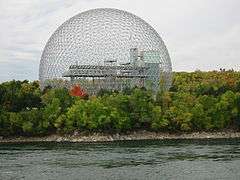
During the 1960s, the Quiet Revolution ushered in an array of socio-political transformations, from secularism and the welfare state to a specifically Québécois national identity. The baby boom generation embraced the changes that liberalized social attitudes in the province.
The 1960s were largely a time of optimism in Quebec. Expo 67 marked Montreal's pinnacle as Canada's largest and most important city and prompted the construction of what is now Parc Jean Drapeau and the Montreal Metro. In 1962, the mayor of Montreal, Jean Drapeau (the man who later was behind Expo 67 and the '76 Olympics projects) instigated the construction of the Metro (subway). The first phase of the subway was completed in 1966. These mega-projects came in the same era as Canada's Confederation centennial celebrations in 1967, when a wave of patriotism swept through most of Canada.
During the Quiet Revolution, the government of Quebec invested heavily in the province's industries. A large component of this was nationalizing some predominant industries into state run business, for example Hydro-Québec, in an attempt to modernize the economy and to encourage the development of francophone businesses. It was during this period that the government established the Caisse de dépôt et placement du Québec, the Régie des rentes and the Société générale de financement to promote the development of the industries in Quebec. In 1961, the Conseil d’orientation économique was established to promote economic growth of the regions of Quebec, growth which was once heavily funded by the Government of Canada.[69]
The upheavals of the 1960s were also a time of conflict for some in Quebec. The emergence of extremist nationalist violence marked a dark chapter in the province's history, when in 1963, the first bombs of the Front de libération du Québec were detonated in Montreal. A major recognition of Quebec's cultural importance came in 1964 when, under authority granted by the Government of Canada, the Province of Quebec signed its first international agreement in Paris. The same year, during an official visit by the Queen, the police were required to maintain order during a demonstration by members of the Quebec separatist movement.
Militant activity came to a head in 1970 with the October Crisis, which led to Prime Minister Pierre Trudeau invoking the War Measures Act. In addition, the Quebec Ombudsman[70] Louis Marceau was instructed to hear complaints of detainees and the Quebec government agreed to pay damages to any person unjustly arrested (only in Quebec). On February 3, 1971, John Turner, the Minister of Justice of Canada, reported that 497 persons had been arrested throughout Canada under the War Measures Act,[71] of whom 435 had been released. The other 62 were charged, of whom 32 committed crimes of such seriousness that a Quebec Superior Court judge refused them bail. The crisis ended a few weeks after the death of Pierre Laporte at the hands of his captors. The fallout of the crisis marked the zenith and twilight of the FLQ which lost membership and public support.
Religion and culture
In the midst of the powerful and urban changes, cultural change took root as well. Quebec was greatly affected by the baby boom; between 1960 and 1970, more than 1.2 million Quebeckers reached the age of 14.[72] As more young Québécois rejected Catholic teachings, they made life choices that were a complete change from tradition in the province. Cohabitation rates among young couples rose, as the institution of marriage gradually lost its obligatory status. Births outside of marriage began to rise, from 3.7 percent in 1961 to 10 percent in 1976, then 22 percent by 1984.[73] As of 2015, 62.9% of births were outside of marriage.[74] Student protests at local universities erupted, mirroring the youth protests throughout the United States and Western Europe during the 1960s and early 1970s. Reforms included an expansion of post-secondary educational opportunities for both English- and French-speaking Quebeckers. In 1968, the Université du Québec à Montréal opened. Protests by English-speaking students led to the establishment of Concordia University in Montreal that same year.[75] The Quiet Revolution combined declericalization with the Church reforms of Vatican II. There was a dramatic change in the role of nuns. Many left the convent while very few young women entered. The Provincial government took over the nuns' traditional role as provider of many of Quebec's educational and social services. Ex-nuns often continued the same roles in civilian dress, and men for the first time started entering the teaching profession.[76]
With the Quiet Revolution, Quebeckers affirmed their identity, especially in the arts, culture and language. It was during the revolution that the government of Quebec formed the Ministry of Culture which focused mainly on defending the French language and culture.[77] The transformation of Quebec was also marked by the adoption of the Law on the assurance-hospitalisation, guaranteeing universal health care through a tax-funded public delivery system. In 1964, Quebec had recognized the equality between men and women and allows all women to have jobs which were once exclusively for men.[78]
Separatism
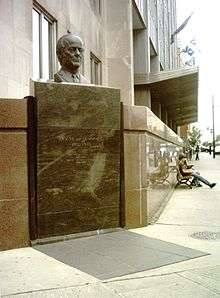
Quebec nationalism, by now popularly termed Quebec separatism, began to gain momentum in the late 1960s as a vocal minority began to push to bring the movement into the mainstream. In 1967, René Lévesque quit the Quebec Liberal Party and founded the Mouvement Souveraineté-Association.
During an official visit to Quebec as a guest of the government of Canada, in front of a huge crowd the President of France, Colonel Charles de Gaulle,who had been temporarily given the rank of general in WWII, undiplomatically declared from the balcony of the Montreal city hall; "Vive le Québec libre!" (Long live free Quebec!). The crowd cheered and applauded loudly. A public outcry erupted over such an unprecedented interference in the affairs of another nation, an act to which the Canadian federal government strongly took offence. De Gaulle abruptly cancelled his visit to Ottawa and went home.[79]
Violence erupted in 1970 with the October Crisis, when Front de libération du Québec members kidnapped British Trade Commissioner James Cross and Quebec Minister of Labour Pierre Laporte. Pierre Laporte was later found murdered. Prime Minister Pierre Trudeau used the War Measures Act, which allowed anyone suspected of being involved with the terrorists to be held temporarily without charge. Not all reformists supported Quebec separatism, for example, the editors of the political journal Cité Libre.[80]
Politics
The growth of Quebec's government bureaucracy and its perceived interventionism produced friction with the federal government, particularly since the federal government followed a policy of close centralization.
English-speaking Canada showed concern at the changes happening in Quebec society and the protests of the Québécois. In 1963, Canada's Prime Minister, Lester B. Pearson, asked the famous question, "What does Quebec want?" as he instituted a royal commission of enquiry into bilingualism and biculturalism to find an answer for this question, and to propose measures to satisfy the demands of the Québécois. French-speaking communities beyond Quebec were also pushing for increased linguistic and cultural accommodations; in 1965 the report of the Laurendeau-Dunton royal commission recommended making French an official language in the parliaments of Canada, the provincial assemblies of Ontario and New Brunswick, in federal tribunals and in all federal government administration of Canada.
The implementation of the proposed measures only increased the divide between English Canada and Quebec francophones. English Canadians considered the measures put in place to be unacceptable concessions to francophones, while francophones considered the measures an insufficient response to their aspirations.
Throughout these constant frictions between the federal government and the provincial government, the Quebec nationalist movement transformed itself into an independence movement. The Ralliement national (RN), led by Gilles Grégoire, and the Rassemblement pour l'indépendance nationale (RIN), led by Pierre Bourgault and Hubert Aquin, were founded in 1960 and quickly became political parties. In 1967, René Lévesque, who until then had been a leading figure in the Liberal Party of Quebec, quit the Liberals to found the Mouvement Souveraineté-Association (MSA).
In 1968, the separatist forces reorganized into a single political party, the Parti Québécois, under the leadership of René Lévesque. Separatist parties gained 8% of the popular vote in Quebec in 1966, 23% in 1970 and 30% in 1973. These results were not strong enough to result in a majority in Quebec's provincial assembly, but they showed the rapid development of a separatist ideology in Quebec.
1970–1980
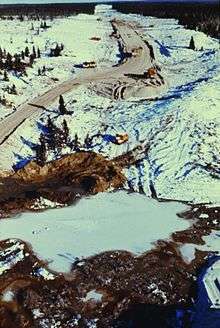
Traditional values continued to be put into question, in particular at the moral and religious level. Every form of authority was questioned, and demonstrations by students and workers' unions were frequent. A noticeable, growing confidence was evident in Quebec, supported by economic and social successes. After a period of rapid change, Quebec paused to search for its path.
A period of fast economic growth was ending. Several factors contributed to the stagnation and even the reduction, in many cases, of the buying power of Québécois:
- the gas price shocks of 1973–1974 and of 1979 generated price inflation and high interest rates;
- economic growth shrank;
- taxes increased to pay for government programs put in place during the period 1960–1975;
- governments, struggling with spending and growing deficits, disengaged itself from some services that citizens now had to pay for out of their own pocket;
- globalization of the economy put downward pressure on salaries.
Quebec's Premier Robert Bourassa unveiled plans for the James Bay Project in 1971.[81] It expanded the capacity of Hydro-Québec by creating one of the largest hydro-electric projects in the world and eventually created a new understanding of the relationship between Quebec and the Cree Nation.[82] Tensions with aboriginal groups were to re-emerge in the 1990s during the Oka Crisis Standoffs in Kanesatake and Kahnawake.
1980 referendum
In 1976, the separatist Parti Québécois under René Lévesque was elected, and formed the first separatist government of the province. The Parti Québécois promised in its campaign that it would not declare independence without obtaining a mandate through a referendum. The mandate of the Parti Québécois was to govern the province well, and not to bring about independence. The first years of the Parti Québécois government were very productive and the government passed progressive laws that were well accepted by the majority of the population, such as French language protection laws, a law on the financing of political parties, laws for compensating road accident victims, for protecting farm land, and many other social-democracy-type laws. Even opponents of the Parti Québécois occasionally acknowledged that the Party governed the province well.
On May 20, 1980, the first referendum was held on sovereignty-association, but was rejected by a majority of 60 percent (59.56% "No", 40.44% "Yes").
1980–2000
Constitution Act, 1982
Together with the Canada Act 1982, an Act of Parliament passed by the British Parliament severed virtually all remaining constitutional and legislative ties between the United Kingdom and Canada. The Act was signed by all the provinces except Quebec.
On the night of November 4, 1981, (widely known among Quebec sovereigntists as La nuit des longs couteaux and in the rest of Canada as the "Kitchen Accord") Federal Justice Minister Jean Chrétien met with all of the provincial premiers except René Lévesque to sign the document that would eventually become the new Canadian constitution. The next morning, they presented the "fait accompli" to Lévesque. Lévesque refused to sign the document and returned to Quebec. In 1982, Trudeau had the new constitution approved by the British Parliament, with Quebec's signature still missing (a situation that persists to this day). The Supreme Court of Canada confirmed Trudeau's assertion that every province's approval is not required to amend the constitution. Quebec is the only province not to have formally assented to the patriation of the Canadian constitution in 1982.[83]
Meech Lake Accord and Charlottetown Accord

The Meech Lake Accord and Charlottetown Accord negotiated during Prime Minister Brian Mulroney's government were attempts to reconcile Quebec and persuade it to sign the Canada Act; however, concessions to Quebec were considered unacceptable to many in the mainly English-speaking parts of Canada, who voted to reject the Charlottetown Accord. The failure of the Accord was a precipitating factor in the separatists' momentum moving towards the 1995 referendum.
Oka Crisis
The Oka Crisis was a land dispute between a group of Mohawk people and the town of Oka beginning on July 11, 1990, and lasted until September 26, 1990.[84]:130 One person died as a result.[84]:134 The dispute was the first well-publicized violent conflict between First Nations and the Quebec government in the late 20th century. The crisis developed from a local dispute between the town of Oka and the Mohawk community of Kanesatake. The town of Oka was developing plans to expand a golf course and residential development onto land which had traditionally been used by the Mohawk. It included pineland and a burial ground, marked by standing tombstones of their ancestors. The Mohawks had filed a land claim for the sacred grove and burial ground near Kanesatake, but their claim had been rejected in 1986.
On August 8, Quebec premier Robert Bourassa had announced at a press conference that he had invoked Section 275 of the National Defence Act to requisition military support in "aid of the civil power", a right available to provincial governments. Prime Minister Brian Mulroney was reluctant to have the federal government and, in particular, the army, so involved. Under the act however, the solicitor general of the province, under direction from Premier Robert Bourassa, had the right to requisition the armed forces to maintain law and order as a provincial responsibility; this move had precedent in Canada, including two decades earlier during the October Crisis.
1995 referendum
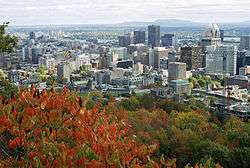
On October 30, 1995, a second referendum for Quebec sovereignty was rejected by a slim margin (50.58% "No", 49.42% "Yes"). Instrumental leaders of the Quebec separatist side were Lucien Bouchard and Quebec Premier Jacques Parizeau. Bouchard had left the senior ranks of Prime Minister Brian Mulroney's Progressive Conservative government to form Canada's first federal separatist party (the Bloc Québécois) in 1991 and had become the leader of the Opposition after the 1993 federal election. He campaigned heavily for the "Yes" side against Liberal Prime Minister Jean Chrétien, a major proponent of the federalist "No" side. Parizeau, a longtime separatist who had played an important role in the 1980 referendum, promised a referendum for sovereignty in his electoral campaign leading up to the 1994 provincial election, which had earned him a majority government in the province. In the aftermath of the referendum, he faced criticism when he blamed the loss of the referendum on "money and the ethnic vote" in his concession speech. Parizeau resigned as Premier and as leader of the Parti québécois the day after his controversial speech, claiming he had always planned to do so in the case of separatist defeat, and Bouchard left federal politics to replace him in January 1996.
Federalists accused the sovereigntist side of asking a vague, overcomplicated question on the ballot. Its English text read as follows:
Do you agree that Québec should become sovereign after having made a formal offer to Canada for a new economic and political partnership within the scope of the bill respecting the future of Québec and of the agreement signed on June 12, 1995?
2000–present
After winning the provincial election in 1998, Bouchard retired from politics in 2001. Bernard Landry was then appointed leader of the Parti Québécois and premier of Quebec. In 2003, Landry lost the election to the Quebec Liberal Party and Jean Charest. Landry stepped down as PQ leader in 2005, and in a crowded race for the party leadership, André Boisclair was elected to succeed him. He also resigned after the renewal of the Quebec Liberal Party's government in the 2007 general election and the Parti Québécois becoming the second opposition party, behind the Action Démocratique.
On November 27, 2006, the House of Commons of Canada passed a motion recognizing that the "Québécois form a nation within a united Canada." The motion was introduced in the House of Commons by the federal government.
Quebec elected Pauline Marois as its first female premier on September 4, 2012. Marois served as leader of the separatist Parti Québécois. The Parti Québécois was elected with a minority of seats in the province's legislative assembly, with remaining seats held by two federalist (non-separatist) parties. Shortly after the election, during a radio network interview in France, Marois stated that another referendum was not conceivable in the current circumstances, although she emphasized that she would support Quebec's interests.[85]
Marois called a provincial election for April 2014, during which her party was defeated by the Parti libéral du Québec (PLQ). The PLQ won by a large margin, securing a majority government. In the 2018 Quebec general election, the Coalition Avenir Québec defeated the Liberals, forming a majority government. François Legault is the current Premier.
In May 2017, floods spread across southern Quebec, with Montreal declaring a state of emergency.[86][87]
Summary of Quebec's political transformations
Names in bold refer to provinces, others to sub-provincial levels of government; the first names listed are those areas mostly nearly corresponding to modern Quebec.
- Canada, the core of New France (1608–1761): a French colony
- Province of Quebec (1763–1791): a British colony
- Lower Canada, one of the Canadas (1791–1841): a British colony
- the Canada East portion of the Province of Canada (1841–1867): a British colony
- Quebec (1867–present): a province of Canada
See also
- Timeline of Quebec history
- History of Montreal
- Codex canadensis
- List of National Historic Sites of Canada in Quebec
General:
References
- https://en.m.wikipedia.org/wiki/List_of_largest_Canadian_cities_by_census#1931
- Hunter Publishing (2008). Québec. Ulysses Travel Guides. pp. 27–8. ISBN 9782894647110.
- Harris, R. Cole; Geoffrey J. Matthews (1987). Historical Atlas of Canada: From the beginning to 1800. University of Toronto Press. p. 1. ISBN 9780802024954.
- Harris, R. Cole; Geoffrey J. Matthews (1987). Historical Atlas of Canada: From the beginning to 1800. University of Toronto Press. p. 2. ISBN 9780802024954.
- Harris, R. Cole; Geoffrey J. Matthews (1987). Historical Atlas of Canada: From the beginning to 1800. University of Toronto Press. p. 3. ISBN 9780802024954.
- Harris, R. Cole; Geoffrey J. Matthews (1987). Historical Atlas of Canada: From the beginning to 1800. University of Toronto Press. p. 5. ISBN 9780802024954.
- Harris, R. Cole; Geoffrey J. Matthews (1987). Historical Atlas of Canada: From the beginning to 1800. University of Toronto Press. p. 58. ISBN 9780802024954.
- McIlwraith, Thomas F.; Edward K. Muller (2001). North America: The Historical Geography of a Changing Continent. Rowman & Littlefield. pp. 67. ISBN 9780742500198.
- McIlwraith, Thomas F.; Edward K. Muller (2001). North America: The Historical Geography of a Changing Continent. Rowman & Littlefield. pp. 73. ISBN 9780742500198.
- McIlwraith, Thomas F.; Edward K. Muller (2001). North America: The Historical Geography of a Changing Continent. Rowman & Littlefield. pp. 77. ISBN 9780742500198.
- Hayes, Derek (2006). Historical Atlas of Canada: Canada's History Illustrated with Original Maps. Douglas & McIntyre. p. 84. ISBN 9781553650775.
- Dalton, Roy. The Jesuit Estates Question 1760–88, p. 60. University of Toronto Press, 1968.
- Courville, Serge; Trans. Richard Howard (2008). Quebec: A historical geography. University of British Columbia Press. p. 49. ISBN 9780774814256.
- Courville, Serge; Trans. Richard Howard (2008). Quebec: A historical geography. University of British Columbia Press. p. 69. ISBN 9780774814256.
- Carr, Thomas Jr. "Writing the Convent in New France: The Colonialist Rhetoric of Canadian Nuns". Quebec Studies (2009), Issue 47, pp. 3–23.
- Chabot o.s.u., Marie-Emmanuel (1979) [1966]. "Guyart, Marie, dite Marie de l'Incarnation". In Brown, George Williams (ed.). Dictionary of Canadian Biography. I (1000–1700) (online ed.). University of Toronto Press.
- Agnes Repplier, Mère Marie of the Ursulines: a study in adventure (New York, 1931)
- MacLeod, D. Peter. "Women of War". Beaver (2009) 89 (4). pp. 28–34.
- Guy Frégault, Canada: the War of the Conquest (1969).
- Hayes, Derek (2006). Historical Atlas of Canada: Canada's History Illustrated with Original Maps. Douglas & McIntyre. pp. 100–1. ISBN 9781553650775.
- Courville, Serge; Trans. Richard Howard (2008). Quebec: A historical geography. University of British Columbia Press. pp. 6–7. ISBN 9780774814256.
- Browne, G. P. (1979). "Murray, James". In Halpenny, Francess G (ed.). Dictionary of Canadian Biography. IV (1771–1800) (online ed.). University of Toronto Press. Retrieved November 17, 2015.
- Hayes, Derek (2006). Historical Atlas of Canada: Canada's History Illustrated with Original Maps. Douglas & McIntyre. p. 116. ISBN 9781553650775.
- Mason Wade, The French Canadians 1760–1967 (1975) 1:47
- Hilda Neatby, The administration of justice under the Quebec Act (1937).
- Robert Arthur Humphreys, "Lord Shelburne and the Proclamation of 1763". English Historical Review (1934): 241–264. in JSTOR Archived 2018-05-01 at the Wayback Machine
- Cameron Nish, ed., French Canadians, 1759–1766: Conquered? half-conquered? liberated? (1966)
- "Canada". Berkley Center for Religion, Peace, and World Affairs. Archived from the original on October 27, 2011. Retrieved December 13, 2011. See drop-down essay on "Early European Settlement and the Formation of the Modern State"
- Ronald Rudin, Making History in Twentieth Century Quebec (1997)
- 1991 statement quoted in Ronald Rudin, "Ouellet, Fernand". in Kelly Boyd, ed. (1999). Encyclopedia of Historians and Historical Writing, vol. 2. p. 8997. ISBN 9781884964336.CS1 maint: extra text: authors list (link)
- Standen, S. Dale (1985). "The Debate on the Social and Economic Consequences of the Conquest: a Summary". Proceedings of the Meeting of the French Colonial Historical Society. 10: 179–193. JSTOR 42952161.
- Dale Miquelon, ed., Society and conquest: the debate on the bourgeoisie and social change in French Canada, 1700–1850 (1977).
- Cameron Nish, ed., The French Canadians, 1759–1766; Conquered? Half-Conquered? Liberated? (1966) has readings on both sides.
- Serge Gagnon, Quebec and its Historians, 1840 to 1920 (Harvest House, 1982).
- Courville, Serge; Trans. Richard Howard (2008). Quebec: A historical geography. University of British Columbia Press. p. 7. ISBN 9780774814256.
- Dickinson, John A.; Brian Young (2008). A Short History of Quebec. McGill-Queen's Press - MQUP. pp. No page. ISBN 9780773577268.
- Denison 1955, p. 159
- Linteau, Paul André; René Durocher; Jean-Claude Robert (1983). Quebec, a History, 1867-1929. James Lorimer & Company. pp. 18–9. ISBN 9780888626042.
- Linteau, Quebec, a History, 1867-1929 p 19
- Brault, Gerard J. The French-Canadian Heritage in New England. Montreal: McGill-Queen's University Press, 1986 p. 52
- Brault, Gerard J. The French-Canadian Heritage in New England. Montreal: McGill-Queen's University Press, 1986 pp. 54
- Roby, Yves. The Franco-Americans of New England: Dreams and Realities. Montreal: McGill-Queen's University Press, 2004 pp. 40–42
- Linteau, Quebec, a History, 1867-1929 p 39
- Linteau, Quebec, a History, 1867-1929 p 40
- "Montreal Archives Portal - Chapter 6". Ville de Montréal (City of Montreal), Quebec. Archived from the original on September 18, 2012. Retrieved October 9, 2012.
- "Montreal Archives Portal - Chapter 8". Ville de Montréal (City of Montreal), Quebec. Archived from the original on November 5, 2012. Retrieved October 9, 2012.
- Linteau, Quebec, a History, 1867–1929 pp. 212–213
- Linteau, Quebec, a History, 1867–1929 pp. 203–204
- Micheline Dumont et al. (The Clio Collective,) Quebec Women: A History (1987) pp. 94–96, 218–220, 241
- Dale Dilbert, "Assister les familles de Québec", Revue d'histoire de L'Amerique francaise (2008) 61#3 pp. 469–499
- Mason Wade, The French Canadians; 1760-1967 (1968) 2:417-33
- Paul-André Linteau; et al. (1983). Quebec: A History 1867-1929. James Lorimer & Company. pp. 261–62. ISBN 9780888626042.
- Rolando Gomes, "Henri Bourassa et l'Imperialisme Britannique (1899-1918)," Bulletin d'Histoire Politique (2008) 16#3 pp 161-182.
- H. Blair Neatby, William Lyon Mackenzie King: 1932–1939 The Prism of Unity (1976) pp. 232–233
- Denyse Baillargeon, Making Do: Women, Family and Home in Montreal during the Great Depression (Wilfrid Laurier U. Press, 1999) pp. 70, 108, 136–138, 159.
- M.C. Urquhart (1965). Historical statistics of Canada. Toronto: Macmillan. p. 38.
- Émile J. Talbot, "Populist Poetry in the 1930s: Jean Narrache and the Articulation of Powerlessness", American Review of Canadian Studies (2011) 41#4 pp. 479–494.
- Marc LaTerreur, "R. B. Bennett et le Québec: Un Cas d'Incompréhension Réciproque", Canadian Historical Association Historical Papers (1969) pp. 94–102.
- B. L. Vigod, "The Quebec Government and Social Legislation during the 1930s: A Study in Political Self-Destruction", Journal of Canadian Studies (1979) 14#1 pp 59–69.
- Susan Mann, The Dream of Nation: A Social and Intellectual History of Quebec (2nd ed 2003) pp. 232–248
- Mann, The Dream of Nation: A Social and Intellectual History of Quebec (2003) pp 249-65
- Susan Mann, The Dream of Nation: A Social and Intellectual History of Quebec (2nd ed 2003) p 250
- Susan Mann, The Dream of Nation: A Social and Intellectual History of Quebec (2nd ed 2003) pp 250-51
- Francis, R. D.; Richard Jones; Donald B. Smith (2009). Journeys: A History of Canada. Cengage Learning. p. 428. ISBN 9780176442446.
- Conrad Black, Render Unto Caesar: The Life and Legacy of Maurice Duplessis (1998)
- Linteau, Paul-André (1991). Quebec Since 1930 pp323-40
- Paulin, Marguerite (2005). Maurice Duplessis. Dundurn. pp. 182. ISBN 9781894852173.
- Norris, Robert S.; Arkin, William M.; Burr, William (1999). "Where they were" (PDF). Bulletin of the Atomic Scientists. 55 (6): 26–35. doi:10.2968/055006011.
- "La création d'une économie moderne". Gouvernement du Québec. Archived from the original on 2012-04-26. Retrieved December 2011. Check date values in:
|accessdate=(help) - "Le Protecteur du citoyen". Protecteurducitoyen.qc.ca. Archived from the original on September 13, 2009. Retrieved July 11, 2010.
- Munroe, Susan. "October Crisis Timeline". Canada Online. Archived from the original on August 12, 2012. Retrieved January 21, 2008.
- Linteau, Paul-André (1991). Quebec Since 1930. 321: James Lorimer & Company. ISBN 9781550282962.CS1 maint: location (link)
- Linteau, Paul-André (1991). Quebec Since 1930 p 325
- Québec, Institut de la Statistique du. "Proportion de naissances hors mariage selon le rang de naissance, Québec, 1976-2017". www.stat.gouv.qc.ca. Archived from the original on May 1, 2018. Retrieved May 1, 2018.
- Linteau, Paul-André (1991). Quebec Since 1930 p 489
- Micheline D'Allaire, "Les Religieuses du Québec dans le Courant de la Laïcisation," Cultures du Canada Français (1986), Vol. 3, pp 38-45.
- "La promotion de la culture et de la langue". Gouvernement du Québec. Archived from the original on 2012-04-26. Retrieved December 2011. Check date values in:
|accessdate=(help) - "Le développement du système social". Gouvernement du Québec. Archived from the original on 2012-04-26. Retrieved December 2011. Check date values in:
|accessdate=(help) - Robert Bothwell (2011). Alliance and Illusion: Canada and the World, 1945-1984. UBC Press. p. 255. ISBN 9780774840880.
- Linteau, Paul-André (1991). Quebec Since 1930 p 496
- Desbiens, Caroline. Power from the North: Territory, Identity, and the Culture of Hydroelectricity in Quebec (2014)
- Hamley, W. (1993). "Native Land Claims in Quebec Considered in a Canadian Context". Geografiska Annaler, 75(2), 93–109
- Sheppard, Robert. "Constitution, Patriation of". The Canadian Encyclopedia. Archived from the original on January 2, 2010. Retrieved September 23, 2009.
- Kalant, Amelia (2004). National identity and the conflict at Oka: Native belonging and myths of postcolonial nationhood in Canada. Routledge. ISBN 9780203503034.
- Canadian Press (October 16, 2012). "Referendum on Quebec sovereignty 'hardly conceivable' right now, Marois tells media in France". National Post. Archived from the original on January 29, 2013. Retrieved October 18, 2012.
- "Quebec hardest hit as battle against floods continues in communities across Canada". Giuseppe Valiante. National Post. May 8, 2017. Retrieved May 8, 2017.
- "Montreal declares state of emergency as flooding continues". Giuseppe Valiante. The Toronto Star. May 7, 2017. Archived from the original on November 26, 2017. Retrieved May 8, 2017.
Further reading
- Brunet, Michel. French Canada in the early decades of British rule (1981) online, 18pp; basic survey
- Cook, Ramsay, ed. French-Canadian Nationalism: An Anthology (1969)
- Coulombe; Pierre A. Language Rights in French Canada (1997)
- Desbiens, Caroline. Power from the North: Territory, Identity, and the Culture of Hydroelectricity in Quebec (2014)
- Dickinson, John A., and Brian Young. A Short History of Quebec ( McGill-Queen's Press 2000)
- Dumont, Micheline et al. (The Clio Collective,) Québec Women: A History (1987)
- Falardeau, Jean-C. and Mason Wade, eds; Canadian Dualism: Studies of French-English Relations (1960), bilingual
- Fraser, Graham (2002). PQ: René Lévesque and the Parti Québécois in Power, Montreal, McGill-Queen's University Press; 2nd edition, 434 pages ISBN 0-7735-2310-3
- Fyson, Donald. "Between the Ancien Régime and Liberal Modernity: Law, Justice and State Formation in colonial Quebec, 1760–1867," History Compass 12#5 (2014) pp 412–432 DOI: 10.1111/hic3.12154
- Gagnon, Alain-G., and Mary Beth Montcalm. Quebec Beyond the Quiet Revolution. Scarborough: Nelson, 1990.
- Gagnon, Alain-G. ed. Quebec: State and Society (1984)
- Heintzman, Ralph. "The political culture of Quebec, 1840–1960." Canadian Journal of Political Science 16#1 (1983): 3-60. in JSTOR
- Jenkins, Kathleen. Montreal: Island City of the St Lawrence (1966), 559pp.
- Lachapelle, Guy, et al. The Quebec Democracy: Structures, Processes and Policies. Toronto: McGraw-Hill Ryerson, 1993.
- Laforest, Guy. Trudeau and the End of a Canadian Dream (1995)
- Langlois, Simon. Recent Social Trends in Quebec, 1960-1990 (1991)
- Lewis, H. Harry. " Population of Quebec Province: Its Distribution and National Origins," Economic Geography (1940) 16#1 pp. 59-68 in JSTOR
- Linteau, Paul-André, René Durocher, Jean-Claude Robert, and Robert Chodos. Quebec: A History 1867–1929 (1983) Quebec Since 1930 (1991), standard 2 vol textbook.
- Linteau, Paul-André, and Peter McCambridge. The History of Montreal: The Story of Great North American City (2013)
- MacDonald, L. Ian. From Bourassa to Bourassa: a Pivotal Decade [i.e. the years 1976-1984] in Canadian History. [S.l.]: Harvest House, 1984. 324 p., ill. with b&w port. photos. ISBN 0-88772-029-3 pbk
- McRoberts, Kenneth. Quebec: Social Change and Political Crisis. (McClelland and Stewart, 1988)
- Manning; Helen Taft. The Revolt of French Canada, 1800–1835: A Chapter of the History of the British Commonwealth (1962) online
- Marshall, Bill, ed. France and the Americas: Culture, Politics, and History (3 Vol 2005)
- Moogk, Peter. La Nouvelle France: The Making of French Canada a Cultural History (2000) to 1763
- Ouellet, Fernand. Lower Canada 1791-1840 (1980) a major scholarly survey
- Roberts, Leslie. Montreal: From Mission Colony to World City (Macmillan of Canada, 1969).
- Saywell, John. The Rise of the Parti Québécois 1967–76 (1977)
- Trofimenkoff, Susan Mann. Dream of Nation: a Social and Intellectual History of Quebec. Toronto: Gage, 1983. 344pp; second edition (2003) under the name of Susan Mann.
- Vacante, Jeffery. "The Posthumous Lives of René Lévesque," Journal of Canadian Studies/Revue d'études canadiennes (2011) 45#2 pp 5–30 online,
- Wade, Mason. The French Canadians 1760-1967 (2 vol. 2nd ed. 1975), standard history online
- Weiss, Jonathan, and Jane Moss. French-Canadian Literature (1996)
- Whitcomb, Dr. Ed. A Short History of Quebec. Ottawa. From Sea To Sea Enterprises, 2012. 92 p. ISBN 978-0-9694667-8-9. 92 p.
Historiography
- Gagnon, Serge. Quebec and its Historians, 1840 to 1920 (Harvest House, 1982); Quebec and its Historians: The Twentieth Century (1985).
- Granatstein, Jack, ed. A Reader's Guide to Canadian History: Confederation to the Present v2 (1982); historiography
- Muise, D. A. ed. A Reader's Guide to Canadian History: 1, Beginnings to Confederation (1982); historiography
- Nish, Cameron, ed., The French Canadians, 1759 - 1766; Conquered? Half - Conquered? Liberated? (1966) has readings on both sides
- Standen, S. Dale. "The Debate on the Social and Economic Consequences of the Conquest: a Summary." Proceedings of the Meeting of the French Colonial Historical Society (1985) in JSTOR
Primary sources
- Innis, Harold Adams, ed. Select documents in Canadian economic history, 1497-1783 (1929), French documents are not translated by Harold Adams Innis
- Kennedy, W.P.M., ed. (1918). Documents of the Canadian Constitution, 1759-1915. Oxford UP.CS1 maint: multiple names: authors list (link) CS1 maint: extra text: authors list (link); 707pp
External links
- Haldimand Collection — Abstracts of the 22 000 letters and documents contained in the 232 series
- Histoire de Sorel-Tracy
- The Quebec Gazette / La Gazette de Québec
Journals
- Quebec History, large-scale encyclopedia
- Quebec Studies
- Revue d'histoire de l'Amérique française
